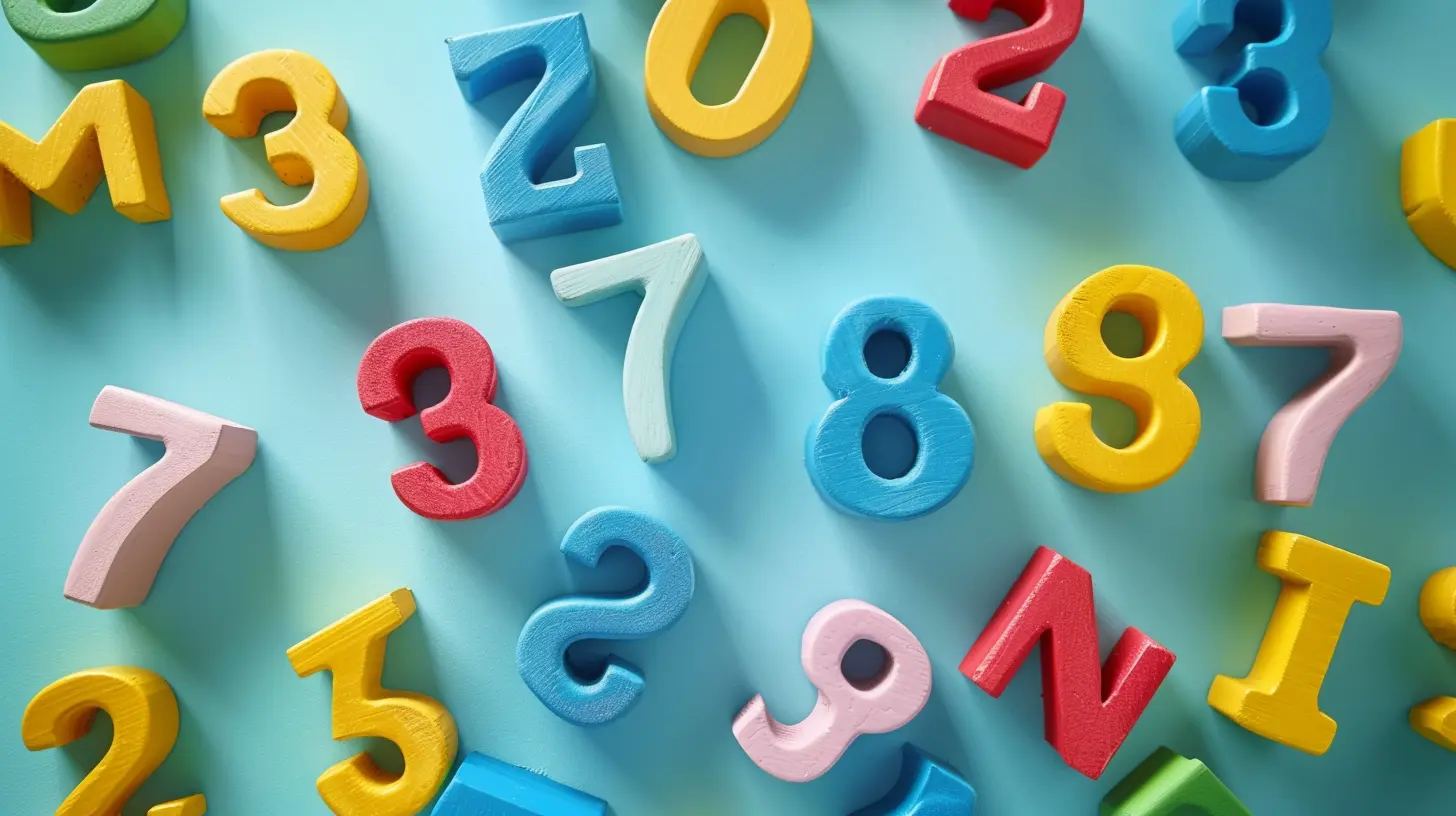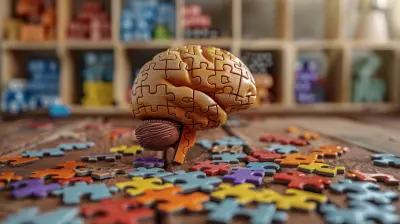Essential Strategies for Solving Word Problems
17 June 2025
Let’s be real—word problems can feel like a puzzle wrapped in a mystery, dressed in math. You read the question, stare at the numbers, and think, "What on Earth do they want me to do?" If that sounds like you (or your students), you're not alone.
The truth is, cracking word problems isn't about being a math wizard—it's about shifting your mindset and using the right tools.
In this article, you're going to get a toolbox full of easy-to-follow, practical strategies to help you tackle any word problem with confidence. So grab your mental notepad, and let’s dive into the essential strategies for solving word problems.
Why Word Problems Are So Tricky
Before we jump into the strategies, let’s talk about why word problems throw so many of us for a loop.Unlike regular math problems that just give you numbers and ask for an answer, word problems hide those numbers in a story. That means you have to:
- Understand the language
- Identify the important info
- Figure out what math operation to use
- Ignore the fluff that’s there to distract you
It’s like baking a cake with secret ingredients—except you're never handed the exact recipe.
Sound familiar? Don’t worry—we're about to change that.
1. Read the Problem Carefully (Then Read It Again)
Yeah, it might seem obvious. But you’d be amazed how many mistakes come from skimming too quickly.🔍 Pro Tip: Read the problem all the way through once to get the gist. Then read it again—this time highlighting or underlining key pieces of information.
Ask yourself:
- Who or what is this problem about?
- What are we trying to find?
- Did they throw in any extra info that doesn’t matter?
Don’t just jump into solving. Take your time setting the stage.
2. Visualize the Scenario
If your brain goes fuzzy with just numbers and words, turn it into a picture.Drawing a diagram, chart, number line, or even stick figures can bring the problem to life. Don’t worry about being Picasso—clarity beats creativity here.
🧠 Visualization helps in:
- Seeing relationships between quantities
- Understanding sequences of events
- Spotting patterns or missing info
It’s literally a cheat code for your mind.
3. Identify Keywords That Reveal the Operation
Certain words are like neon signs telling you what operation to use. Here are a few to keep handy:Addition
- Sum
- In total
- Altogether
- Combined
Subtraction
- Difference
- Fewer
- How many more?
- Left over
Multiplication
- Times
- Each
- Every
- In all
Division
- Per
- Split
- Shared equally
- Out of
🚨 But be careful! These words aren’t foolproof. Context matters.
For example, “more” can mean addition in one problem and subtraction in another. That’s why it's important not to rely on keywords alone—use them as clues, not commands.
4. Break It Down Into Smaller Steps
If the problem looks like a monster, just cut it up into manageable slices.Let’s say you’ve got a multi-step problem. Your first instinct might be to panic—but don’t. Slow it down and figure out:
- What’s the first thing I need to solve?
- What info do I get from that?
- What’s the next step?
Think of it like assembling a LEGO set. You can’t build the castle unless you first build the base.
Use bullet points or number your steps if that helps you stay organized.
5. Write an Equation or Expression
Once you’ve figured out what operation(s) you need, turn the words into math.For example:
> “Sarah has 5 apples. She buys 3 more bags with 4 apples each. How many apples does she have now?”
Start with what you know:
- She starts with 5 apples.
- She buys 3 bags × 4 apples = 12 apples
- So: 5 + 12 = ?
Writing out an equation helps turn the vague into something specific, and specific is where the magic happens.
6. Estimate Before You Solve
Want to catch silly mistakes early? Estimate your answer first.If your final answer is way off from your estimate, your math probably took a detour into the wrong neighborhood.
For instance, if you’re adding 480 and 220, you’d estimate around 700. If your solution comes out as 7,000, red flag! Time to double-check.
Estimation keeps you grounded and gives your math a reality check.
7. Actually Do the Math (Carefully!)
Okay, now it’s time to roll up your sleeves and crunch the numbers.Use the method you’re most comfortable with—mental math, paper and pencil, calculator (if allowed). Just stay neat. One tiny slip and you could mess up the whole answer.
🧮 Helpful tip: Label your work. If you’re solving for "how many apples,” write that next to your answer so it’s clear what it stands for.
8. Check Your Answer (Back-Check)
This step? Often skipped. But gold if you want to get the right answer consistently.Ask:
- Does my answer make sense?
- Is it too big or too small?
- Can I plug it back into the problem and see if it fits?
Let’s go back to Sarah and her apples. If your final answer says she now has 8 apples, compare that to your estimation. That’s clearly off because she had 5 and bought 12. Catch it now, not after it’s graded.
Double-checking gives you a second line of defense.
9. Practice Different Types of Word Problems
Not all word problems are built the same. Some deal with time, others with money, others with speed or ratios. The more types you tackle, the more familiar patterns you'll start to recognize.📚 Try these categories:
- One-step vs. multi-step
- Geometry-based
- Percentages and fractions
- Logical reasoning
- Real-life scenarios (shopping, travel, recipes)
Think of it like training for a sport. Variety builds muscle—and in this case, brain muscle.
10. Build a Word Problem Vocabulary List
Make your own cheat sheet of common words and what they usually mean in math terms.Every new word problem you solve is a chance to add something new to your list.
Over time, you’ll start recognizing phrases like “how many in total” or “each group has” without getting tripped up.
Kind of like learning a new language—once you’re fluent, the problems start making a whole lot more sense.
Real Talk: What If You Still Struggle?
Sometimes, even with all the strategies in the world, you're still stuck. And that’s completely normal.Here’s what to do:
- Talk it out: Explaining the problem to someone else can reveal what you’re missing.
- Take a break: Your brain sometimes needs space to process.
- Go backward: Start from the answer (if given) and figure out how they got there.
- Use online tools/simulations: Visual aids and apps can offer a new perspective.
Just remember—struggling doesn’t mean failing. It means learning. Every word problem you solve strengthens your problem-solving muscles.
Wrap Up: You’ve Got This
Word problems don’t have to be intimidating. Really, they’re just stories with a math twist. Once you learn to decode the story, the math part gets a whole lot easier.So the next time you face one, take a breath. Use the tools we talked about:
- Read it carefully
- Visualize the scene
- Look for clue words
- Break it down
- Write the equation
- Estimate
- Solve
- Check your work
- Practice often
- Build your vocab
Turn that mountain of confusion into a molehill of clarity—and maybe even have a little fun while you’re at it.
You’ve got this.
all images in this post were generated using AI tools
Category:
Math SkillsAuthor:

Madeleine Newton
Discussion
rate this article
2 comments
Mateo Long
Thank you for sharing these valuable strategies! Approaching word problems with patience and practice can truly make a difference, boosting both understanding and confidence in students.
June 20, 2025 at 10:43 AM

Madeleine Newton
Thank you for your thoughtful comment! I'm glad you found the strategies helpful—patience and practice are indeed key to mastering word problems!
Zoey Torres
Great article! Your insights on breaking down word problems into manageable steps are incredibly helpful. Encouraging a clear, methodical approach will surely empower students to tackle challenges with confidence. Keep up the fantastic work!
June 20, 2025 at 4:01 AM

Madeleine Newton
Thank you so much for your kind words! I'm glad you found the insights helpful. Your support means a lot!


